Semi-truck drivers are often tasked with living in their trucks as they travel from Point A to Point B.
While this is more prominent with over the road haulers, there is plenty of other semi-truck drivers in the trades, mining, forestry, and construction industry who need to bobtail their semi to a job site, where they will need to live the majority of the season.
In a situation like this, the semi-truck needs to earn its living hauling things like heavy equipment, machinery, equipment trailers, and timber.
This makes it a less than ideal place to live. Especially if it is a company-owned semi-tractor that needs to be used by other workers.
Operators in this position are often challenged by figuring out how to get their living accommodations and the semi-tractor to the jobsite all in one trip.
This begs the question, can you tow a fifth-wheel RV trailer behind a semi-tractor?
Yes, the average semi-tractor has a towing capacity of around 80,000-pounds, which is more than enough power to easily pull even the heaviest of fifth-wheel RV trailers. They also tend to accept the same size kingpin that comes on most fifth-wheel trailer pin boxes. Though some key details need to be put in place in advance to make sure everything connects correctly and that the entire rig is truly road legal.
This includes things like the size of the kingpin, the wiring loom, the turning radius, and the level at which the fifth-wheel trailer will be towed.
Like a lot of things, the devil is in the details. So, we decided to hitch up and ask some key questions.
Does The Kingpin Size Matter When Towing A Fifth-Wheel Trailer?
The kingpins on a lot of fifth-wheel trailers, commercial cargo vans, and equipment trailers tend to be the same 2-inch diameter in size.
Though this is not always the case. So, make sure you are putting in your due diligence.
There are a few kingpins that measure up to 3.5-inches which won’t be compatible. So make sure to double check this.
The kingpin plays a critical role in both coupling and pivoting the relationship between the semi-tractor and the trailer being towed.
As long as they are both the same size, the kingpin itself won’t be an issue.
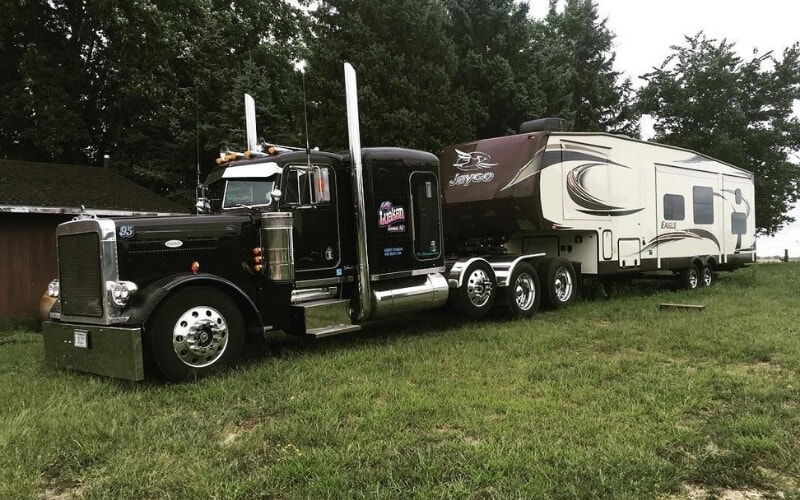
Will The Fifth-Wheel Trailer Be Level When Towed Behind A Semi?
Once you have established that the kingpin on the fifth-wheel trailer will be compatible, the next step is to check how level it will be, if towed behind the semi-tractor.
Semis are not specifically engineered to tow fifth-wheel trailers and non-commercial grade equipment trailers.
Even if you can get the fifth-wheel properly hitched behind the semi-tractor the fifth-wheel might end up at too steep of an incline to be towed safely.
This can vary from one fifth-wheel trailer to the next, depending on the intended ride height and suspension system.
While a little bit of an angle is to be expected when a semi pulls a fifth-wheel, you don’t want the angle to be too extreme.
The last thing you want is to have the rear bumper of the fifth-wheel trailer contacting the ground when you go over uneven road surfaces or accidentally damaging the suspension system.
It’s also important to note that unlevel towing puts the fifth-wheel at increased risk of a dangerous trailer sway incident.
You use the following steps to assess if the fifth-wheel trailer will be at too high of an angle when towed behind a semi-tractor.
- Step One: Move the semi-truck and the fifth-wheel trailer to a spot with perfectly level ground. Make sure that both have all their tires properly inflated.
- Step Two: Carefully measure the distance from the ground to the hitch of the semi-truck, and write the number down.
- Step Three: Carefully measure the distance from the ground to the pin box on the fifth-wheel trailer, and write the number down.
- Step Four: Compare the difference between the two measurements.
Ideally, you don’t want there to be more than 2 to 2.5 inches in the difference between the height of the semi-trucks hitch and the pin box of the fifth-wheel trailer.
Beyond 2.5-inches and you are putting the fifth-wheel at very high risk for a dangerous trailer sway problem.
Not to mention concerns about damaging the rear suspension or rear bumper.
Even something as simple as a speed bump could turn into a severe road hazard when towing an unlevel fifth-wheel trailer.
Is The Wiring Compatible Between The Fifth-Wheel Trailer & A Semi-Truck?
As we mentioned earlier, semi-tractors are not originally meant to tow fifth-wheel RV trailers.
You should expect that left to their own devices the 7-way pins on the fifth-wheel and the semi-truck will not be compatible.
You might get lucky, but chances are good that you will need to seek out an adapter. Some will translate the inputs of the semi-truck to a fifth-wheel trailer.
You might be able to source one through a commercial vehicle mechanic or at an auto parts store.
Though it’s a coin toss chance that such a seldom-needed item will be in stock. Ultimately, it might be better to go through an online vendor.
You should be able to find the fifth-wheel to semi-truck wiring adapter you need by entering the term “Wiring Adapter For A Semi-Truck To Fifth-Wheel” into a search engine.
Check The Clearance between truck and trailer
Clearance is a major factor when it comes to towing a fifth-wheel with a semi-truck. This includes factoring in the turning radius.
Checking TheTruck Cab to Trailer Overhang Clearance
To do this you need to measure from the center of the fifth-wheel hitch to the width of the trailer.
Then compare this to the wheelbase width of the semi-truck. This will give you an idea of how the trailer will respond in its relationship to the semi-truck. Ideally, you want the difference to be 4-inches or more.
Checking The Semi-Frame To Fifth Wheel Trailer Clearance
This calls for measuring from the center of the fifth-wheel hitch to the back corner of the frame. Then you need to measure the from the kingpin on the trailer to the underside of the trailer.
You want to see a difference of at least 5-inches to ensure that there is sufficient turning clearance.
Would It Be Better To Tow The Fifth-Wheel Trailer Behind a Pickup Truck?
This is admittedly the way fifth-wheel trailers are meant to be towed.
Though not everyone has a pickup truck with the payload capacity and power to pull a fully-loaded and decked out fifth-wheel RV trailer.
Most half-ton pickup trucks can’t safely tow a fifth-wheel trailer.
Let’s say for example that you are a construction worker with a half-ton pickup truck and a heavy fifth-wheel RV that has a gross vehicle weight rating of over 20,000-pounds.
In a scenario like this, the pickup truck couldn’t safely tow or even support the hitch weight of the fifth-wheel RV. You would have to look for an alternative.
If we take this example up a notch. Let’s say that you have a one-ton pickup truck with a robust towing package and payload capacity.
While the statistics can vary from make and model, chances are this one-ton pickup truck will certainly have the ability to tow your fifth-wheel trailer with a 20,000-pound GVWR.
The turning clearance and other specifics will be more in line with how a fifth-wheel trailer is meant to be towed.
Though you would need to have a fifth-wheel hitch installed into the box of the one-ton pickup truck.
What Are Some Of The Best Trucks To Pull A Fifth-Wheel Trailer?
The RAM 3500 Heavy-Duty
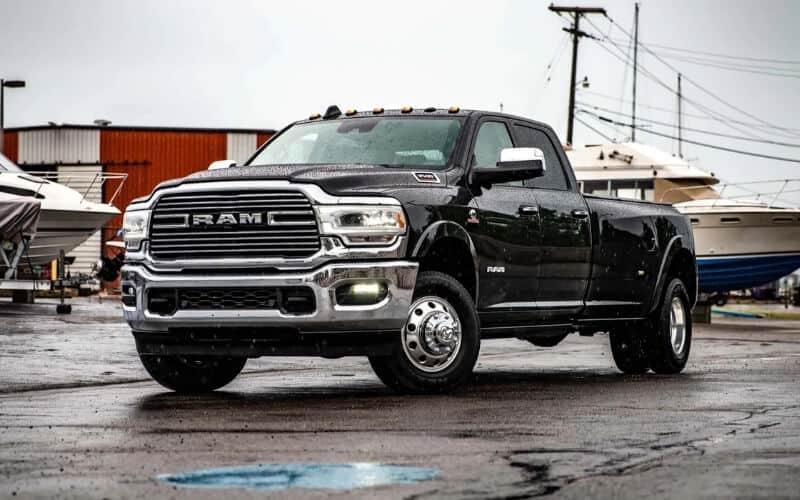
This is one of the most powerful one-ton pickup trucks on the domestic market. It has a diesel engine which provides superior torque and a maximum towing capacity of up to up to 35,100 pounds. This is enough to confidently pull most fifth-wheel trailers.
The Ford F450 Super Duty
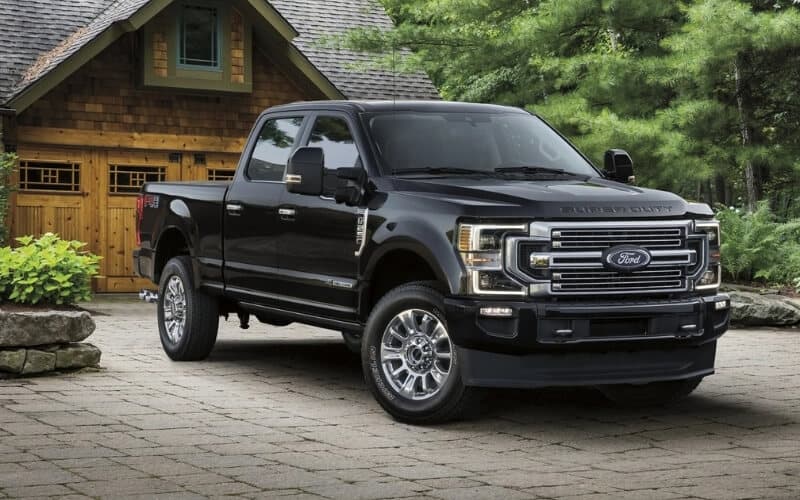
Ford is one of the best selling truck brands. The diesel engine in the F450 gives it a pulling power of up to 27,000-pounds, which is enough to pull most fifth-wheel trailers.
Conclusion
On a technical level, it is indeed possible to adapt most semi-trucks to be able to pull a fifth-wheel trailer.
Though under most normal circumstances there are better alternatives.
Especially when you consider the staggering cost of even a pre-owned semi-truck tractor to that of a three-quarter or one-ton pickup truck.

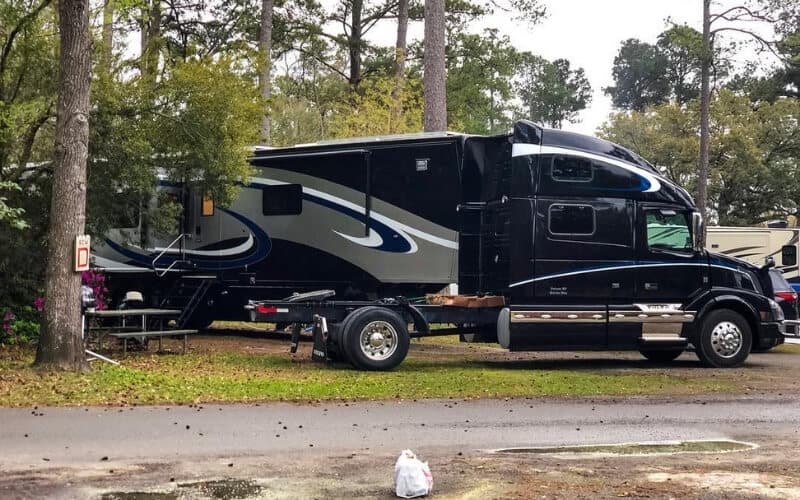


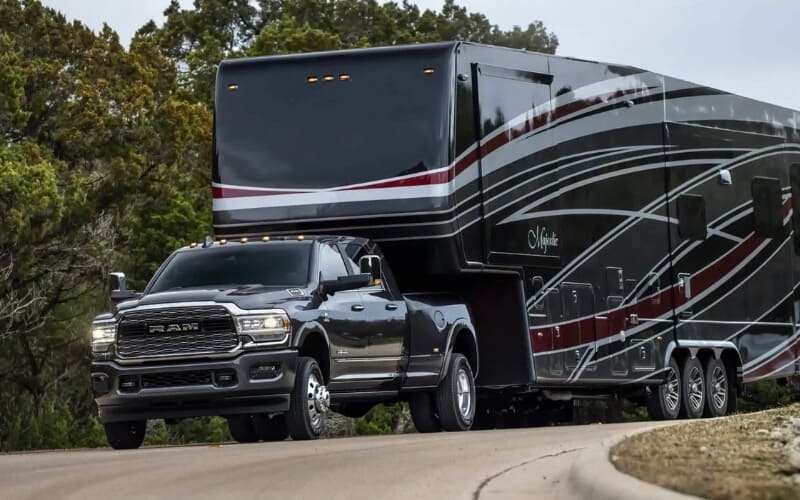
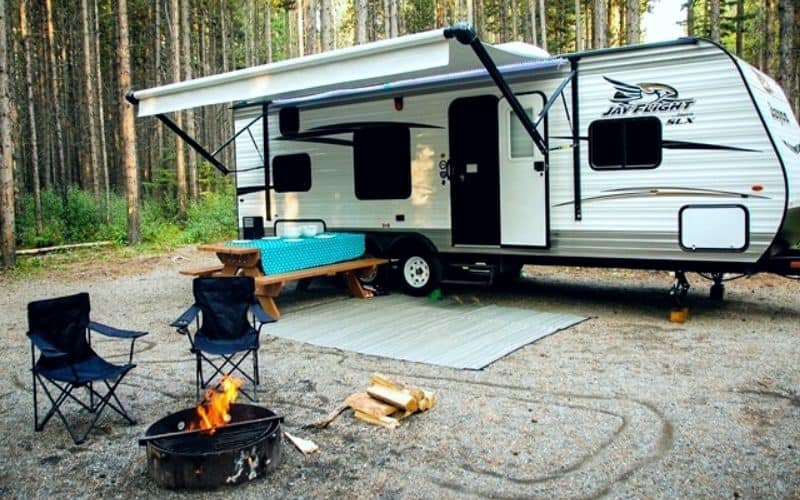
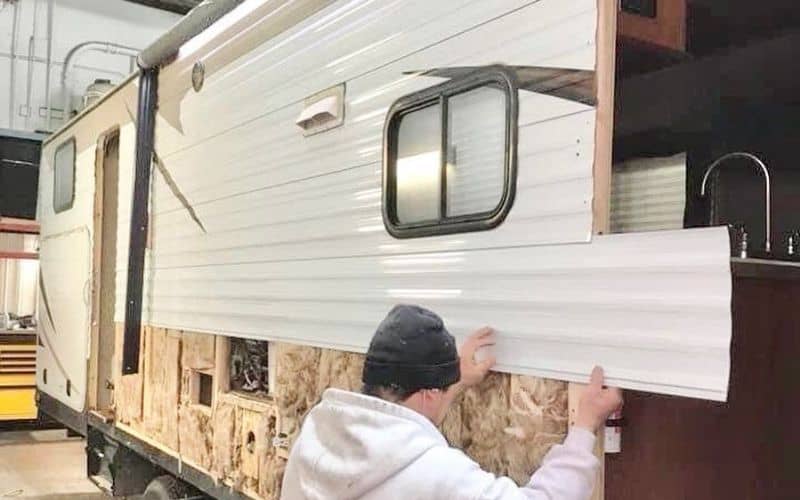
4 Comments
Marty Main
3 years agoStaggering cost of a used Semi truck (HDT)? Most HDTs (with apx 500k miles) can be procured for less than a new 350/3500 (1-ton) sized pickup truck and can more easily tow and stop as well as be more comfortable. For instance, all in I spend $52k on my 2015 Volvo VNL730 with 620K miles modified to gently pull my 5th wheel RV trailer and carry my 4-door Jeep Wrangler in an enclosed “garage”. I will gladly send pictures to show you my rig.
Greg
2 years agoGood information on being able to tow a fifth wheel with a semi tractor trailer. The one thing you forgot is that semis have hair systems for breaking and air ride suspension if they are so equipped. How do you expect to activate the brakes on a fifth wheel trailer when they’re electric when a semi has only air system. You forgot to mention that that would have to have a special electronic controller and 7 pin plug for lights and brakes for the fifth wheel trailer.
Micah Green
2 years agoSemi’s already have a 7 pin setup, not all trailers are equipped with air so the electric brake function needs to be there.
James
1 year agoI was wondering if you have some kind of air control Box that sends an electric charge to your wiring system or what